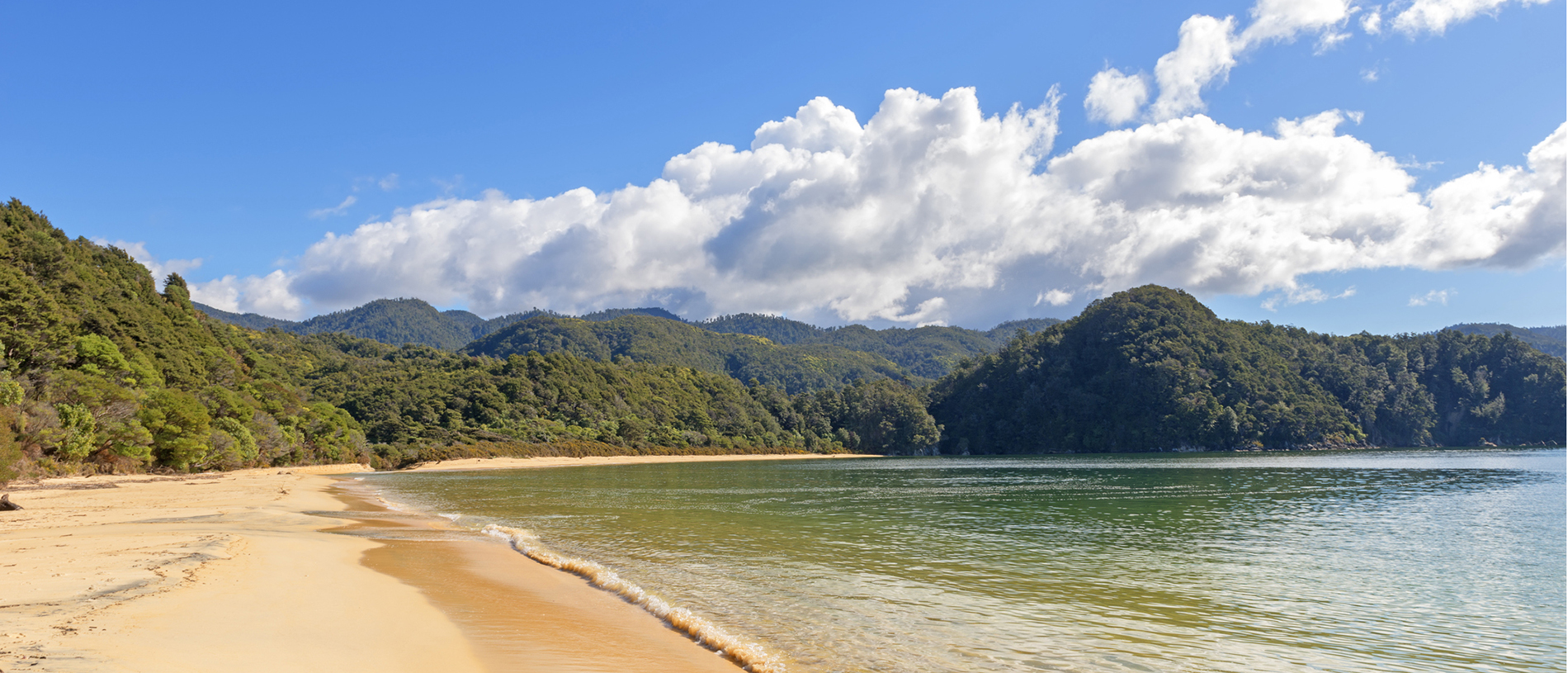
Abel Tasman National Park: a piece of paradise
Abel Tasman is probably New Zealand’s best-known and most popular national park – but it really has to be seen to be believed.
For at least 500 years, Māori lived along the coast northwest of Nelson, gathering food from the sea, estuaries and forests, and growing kūmara on suitable sites.
On 18 December 1642, Dutch explorer Abel Tasman anchored his two ships near Wainui in Mohua Golden Bay, becoming the first European to visit Aotearoa New Zealand. He lost four crew in a skirmish with Māori there, Ngāti Tūmatakōkiri, and named the place Murderers Bay.

Today a section of beautiful coastline is protected in the Abel Tasman National Park, which was formed after Nelson conservationist Perrine Moncrieff became concerned at the prospect of logging in the area. She campaigned to have 15,000 hectares of Crown land made into a national park. A petition presented to the government suggested Abel Tasman’s name for the park, which was opened in 1942 on the 300th anniversary of his visit.
New Zealanders love this area so much that a Givealittle campaign in 2016 raised $2 million to buy a privately owned beach on the Awaroa Inlet and add it to the national park.
Running along the seaward margin of the park is the Abel Tasman Coast Track, 60km long and taking three to five days to walk. The area is blessed with a mild climate, golden beaches and lush coastal native bush, meaning this coastal track is one of New Zealand’s best-known and most popular walks. There are four huts and 19 campsites along the Abel Tasman Coast Track, which must be booked in advance all year round. You can check availability and book here.
French explorer Dumont D’Urville, who visited the area in the 1820s, found South Island kōkako in the forests around Torrent Bay; these and several other native bird species have since disappeared and bellbird, fantail, pigeon and tūī are now the main forest birds. Around the beaches, estuaries and wetlands, pūkeko are common. In 2007 the Abel Tasman Birdsong Trust was formed, with a vision to have the forests and beaches of Abel Tasman once again filled with birdsong.

Fourteen native fish species have been recorded in the area’s waterways, including threatened migratory galaxiid species, such as short-jaw and giant kōkopu, kōaro and inanga. Banded kōkopu are often seen in small pools if you are quiet.
The park’s rocky coastline is a fascinating place to explore, particularly with snorkel and goggles. Between the tides, plants and animals occupy distinct bands like the forest zones between sea level and the bushline. Periwinkles, tubeworms, Neptune’s necklace and pink algae are all adapted to a particular level of exposure to sun and wind.

Fur seals are found along the coast of the park, particularly on the more remote granite headlands of Separation Point, Tonga Island and Pinnacle Island.